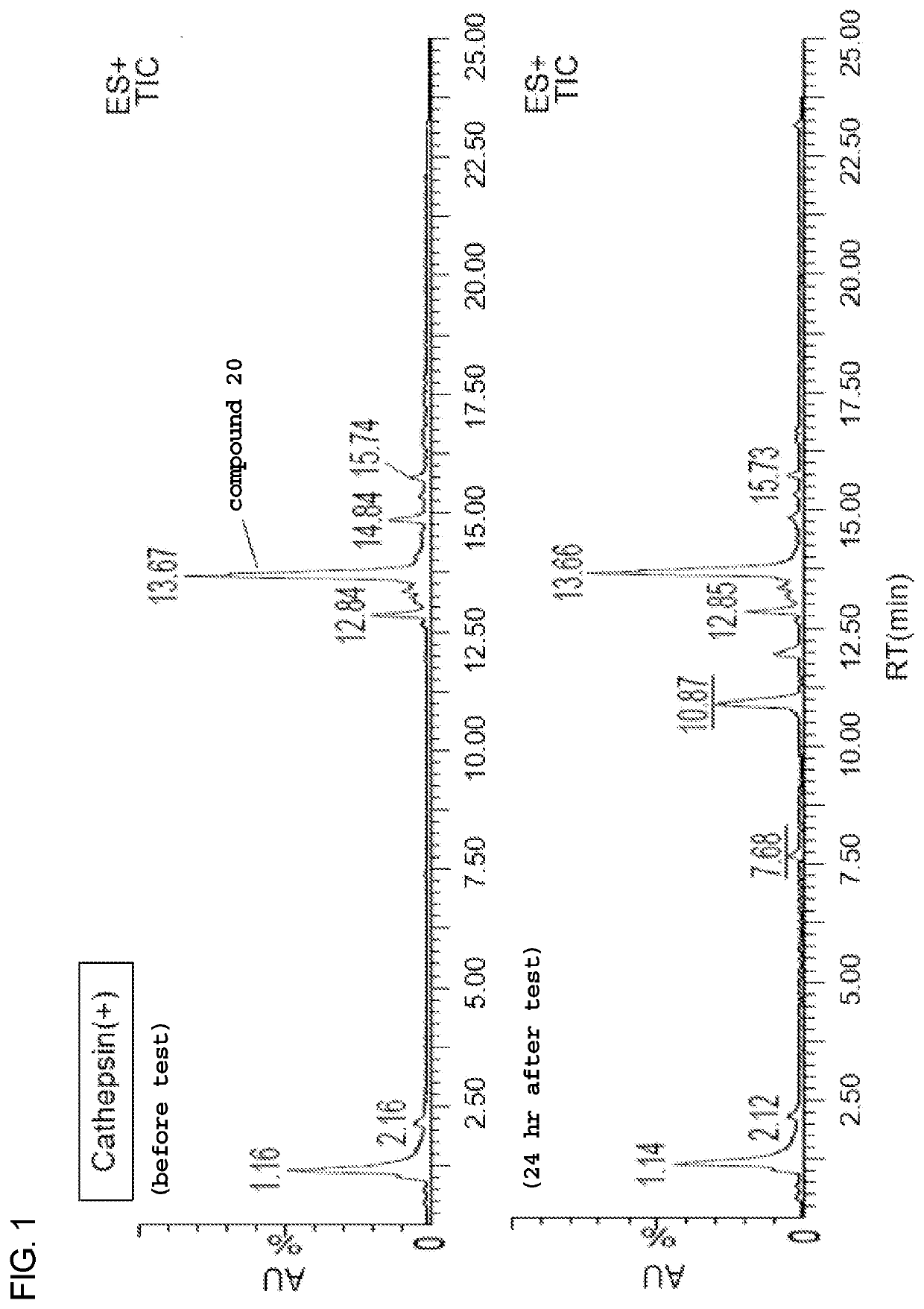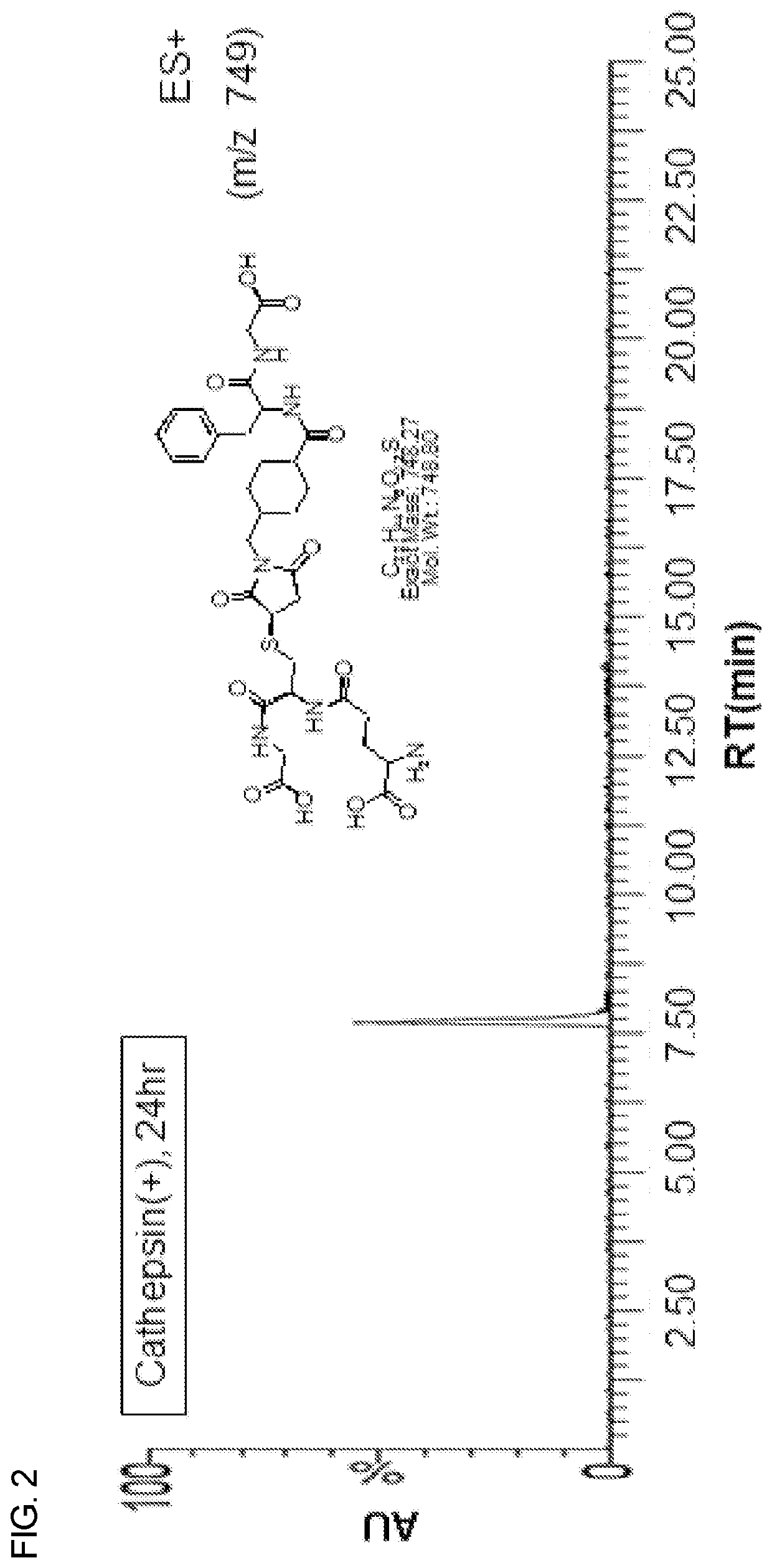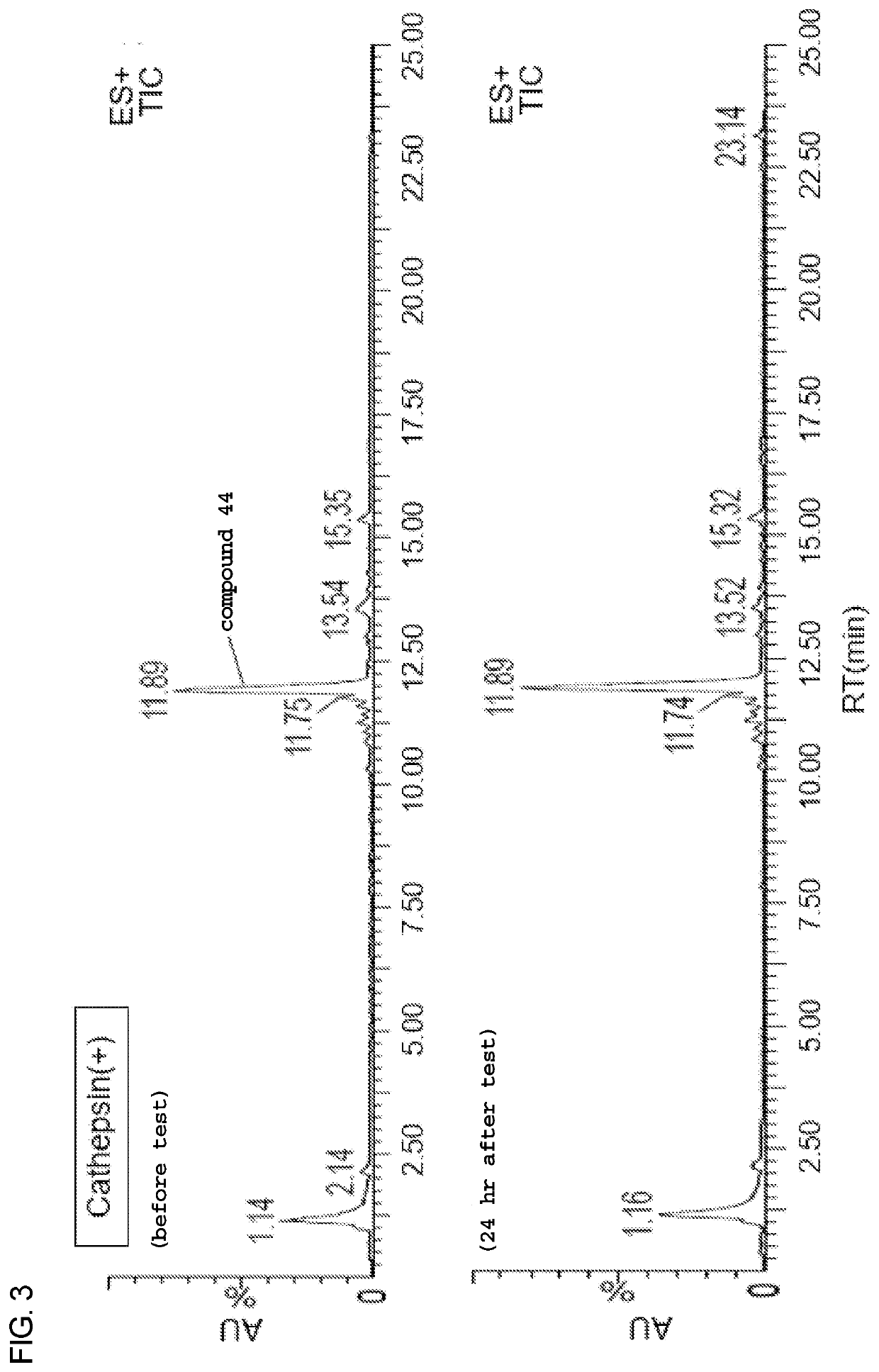Heterobifunctional monodispersed polyethylene glycol having peptide linker
- Summary
- Abstract
- Description
- Claims
- Application Information
AI Technical Summary
Benefits of technology
Problems solved by technology
Method used
Image
Examples
example 1
Synthesis of Compound 11
[0180]Trishydroxymethylaminomethane (30.3 g, 250 mmol), sodium carbonate (5.30 g, 50 mmol), dehydrated methanol (237 g), and benzonitrile (5.15 g, 50 mmol) were charged in a 500 mL four-necked flask equipped with a thermometer, a nitrogen inlet tube, a stirrer, a Dean-stark tube, and a cooling tube, and reacted at 65° C. for 24 hr. After filtration, the solvent was evaporated under reduced pressure, the residue was dissolved by adding isopropyl alcohol and dichloromethane, and washed with 10 wt % brine. The organic layer was dried over anhydrous sodium sulfate, and filtered. The solvent was evaporated under reduced pressure. The residue was dissolved in tetrahydrofuran, hexane was added to perform crystallization, and filtration was performed to give the compound of the formula (11).
[0181]1H-NMR (CDCl3, internal standard TMS); δ(ppm): 3.06 (2H, brs, —OH), 3.65-3.81 (4H, dd, >C(CH2OH)2), 4.38 (2H, s, —CNO—CH2—), 7.32-7.83 (5H, m, arom. H)
example 2
Synthesis of Compound 12
[0182]Dodecaethylene glycol monomethyl ether (10.4 g, 18.5 mmol), toluene (52.0 g), triethylamine (2.44 g, 24.1 mmol), and methanesulfonyl chloride (2.34 g, 20.4 mmol) were charged in a 100 mL three-necked flask equipped with a thermometer, a nitrogen inlet tube, a stirrer, a Dean-stark tube, and a cooling tube, and reacted at 40° C. for 3 hr. The mixture was diluted with dichloromethane, washed with water, and the organic layer was dried over anhydrous magnesium sulfate. It was filtered and the solvent was evaporated under reduced pressure to give a compound of the formula (12).
[0183]1H-NMR (CDCl3, internal standard TMS); δ(ppm): 3.08 (3H, s, —O—SO2—CH3), 3.38 (3H, s, —O—CH3), 3.45-3.85 (46H, m, CH3—O—(CH2CH2O)11—CH2CH2—O—SO2—CH3), 4.38 (2H, m, —CH2—O—SO2—CH3)
example 3
Synthesis of Compound 13
[0184]A compound of the formula (11) (0.21 g, 1.01 mmol), dehydrated tetrahydrofuran (7.70 g), a compound of the formula (12) (2.46 g, 3.84 mmol), and 1M potassium tert-butoxide / tetrahydrofuran solution (3.72 g, 4.04 mmol) were charged in a 50 mL three-necked flask equipped with a thermometer, a nitrogen inlet tube, a stirrer, a Dean-stark tube, and a cooling tube, and reacted at 50° C. for 4 hr. Dichloromethane and 25 wt % brine were added and the mixture was washed with water. The organic layer was dried over anhydrous sodium sulfate, filtered and the solvent was evaporated under reduced pressure to give a compound of the formula (13).
[0185]1H-NMR (CDCl3, internal standard TMS); δ(ppm): 3.38 (6H, s, —O—CH3), 3.40-3.75 (100H, m, >C(CH2O)2—, —O—(CH2CH2O)12—, —CNO—CH2—), 4.36 (2H, s, —CNO—CH2—), 7.37-7.94 (5H, m, arom.H)
PUM
 Login to View More
Login to View More Abstract
Description
Claims
Application Information
 Login to View More
Login to View More - R&D
- Intellectual Property
- Life Sciences
- Materials
- Tech Scout
- Unparalleled Data Quality
- Higher Quality Content
- 60% Fewer Hallucinations
Browse by: Latest US Patents, China's latest patents, Technical Efficacy Thesaurus, Application Domain, Technology Topic, Popular Technical Reports.
© 2025 PatSnap. All rights reserved.Legal|Privacy policy|Modern Slavery Act Transparency Statement|Sitemap|About US| Contact US: help@patsnap.com



